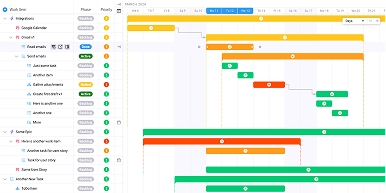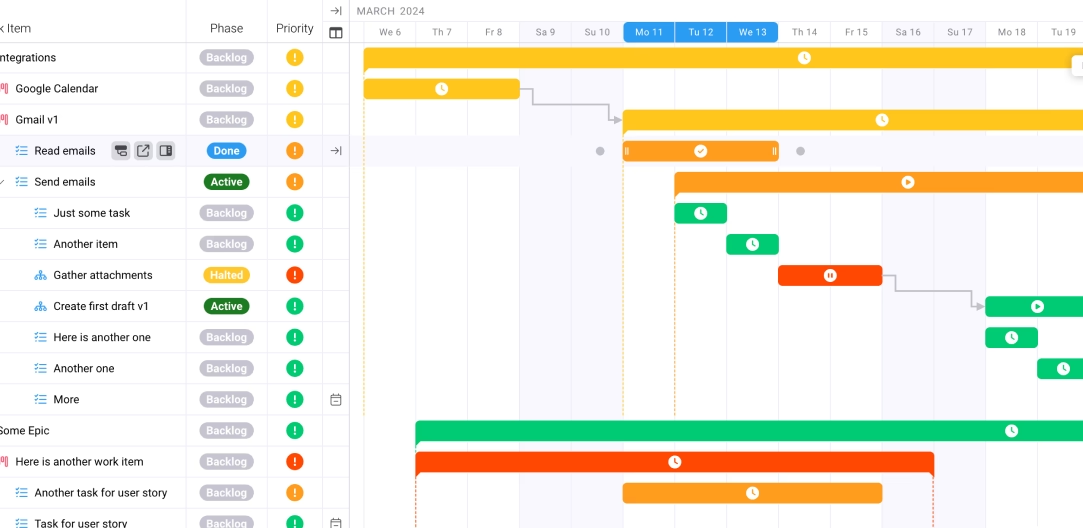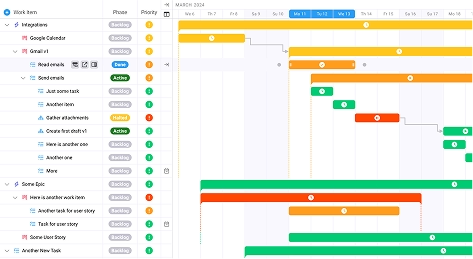
Overcoming Agile Challenges in Marketing Agencies
Key takeaways:
Agile methodologies have revolutionized software development, promising increased flexibility, faster delivery, and improved team collaboration. Naturally, marketing agencies have sought to harness these benefits. However, many agencies encounter significant challenges when implementing Agile, leading to frustration and, in some cases, abandonment of the approach.
This article explores the common reasons Agile fails within marketing agencies and offers practical solutions to overcoming Agile challenges in marketing agencies.
1. Lack of Agile Training and Understanding
The Problem:
A primary barrier to successful Agile adoption in marketing is a lack of proper training and understanding of Agile principles among team members. Without a solid grasp of Agile methodologies, teams may misapply practices, leading to confusion and inefficiency.
The Solution:
- Invest in Specialized Training: Provide training programs tailored to Agile marketing, ensuring that team members understand how to apply Agile principles to marketing tasks.
- Continuous Learning: Encourage ongoing education through workshops, webinars, and reading materials focused on Agile marketing practices.
2. Imposing Change Without Clear Justification
The Problem:
Implementing Agile as a top-down directive without explaining the rationale can lead to resistance among team members. Employees may not understand the benefits or necessity of the change, resulting in poor adoption.
The Solution:
- Communicate the ‘Why’: Clearly articulate the reasons for adopting Agile, highlighting how it addresses current challenges and benefits the team.
- Inclusive Planning: Involve team members in the planning process to foster ownership and buy-in.
3. Clinging to Traditional Processes
The Problem:
Attempting to overlay Agile practices onto existing traditional workflows without meaningful change can hinder Agile’s effectiveness. This hybrid approach often leads to confusion and diluted benefits.
The Solution:
- Evaluate and Adjust Processes: Assess current workflows and identify areas where Agile practices can be fully integrated.
- Commit to Change: Encourage a cultural shift that embraces Agile principles, moving away from outdated practices.
4. Inadequate Team Structure and Roles
The Problem:
Agile relies on well-defined roles and responsibilities. In marketing agencies, unclear roles can lead to overlapping duties and accountability issues.
The Solution:
- Define Roles Clearly: Establish specific roles such as Product Owner, Scrum Master, and team members, with clear responsibilities.
- Empower Teams: Encourage self-organizing teams that can make decisions and adapt quickly to changes.
5. Overemphasis on Short-Term Planning
The Problem:
Focusing solely on short-term goals can cause teams to lose sight of long-term objectives, leading to fragmented strategies and inconsistent messaging.
The Solution:
- Balance Planning Horizons: Combine short-term sprints with long-term strategic planning to ensure cohesive campaigns.
- Regular Reviews: Conduct periodic reviews to align short-term activities with overarching goals.
6. Resistance to Cultural Change
The Problem:
Agile requires a cultural shift towards collaboration, transparency, and adaptability. Resistance to this change can impede Agile implementation.
The Solution:
- Foster an Agile Mindset: Promote values such as openness, continuous improvement, and customer focus.
- Lead by Example: Leadership should model Agile behaviors to encourage adoption throughout the organization.
7. Misalignment with Client Expectations
The Problem:
Clients accustomed to traditional project timelines may struggle with Agile’s iterative approach, leading to dissatisfaction.
The Solution:
- Educate Clients: Explain the benefits of Agile, such as increased flexibility and faster delivery of value.
- Set Clear Expectations: Define how Agile processes will impact project timelines and deliverables.
8. Inappropriate Application of Agile Frameworks
The Problem:
Applying Agile frameworks designed for software development directly to marketing without adjustments can lead to misfits and inefficiencies.
The Solution:
- Customize Frameworks: Adapt Agile practices to fit marketing workflows, considering the unique nature of creative processes.
- Iterative Testing: Implement changes incrementally, testing and refining approaches to find the best fit.
9. Lack of Leadership Support
The Problem:
Without strong support from leadership, Agile initiatives may lack the necessary resources and authority to succeed.
The Solution:
- Secure Executive Buy-In: Engage leadership early in the Agile transformation process to ensure commitment and support.
- Demonstrate Value: Showcase early wins and improvements to build confidence in Agile methodologies.
10. Insufficient Measurement and Feedback Mechanisms
The Problem:
Without proper metrics and feedback loops, it’s challenging to assess the effectiveness of Agile practices and make informed improvements.
The Solution:
- Implement KPIs: Establish key performance indicators to monitor progress and outcomes.
- Regular Retrospectives: Hold frequent retrospectives to reflect on successes and areas for improvement.
Conclusion
Adopting Agile in marketing agencies presents unique challenges, but with thoughtful adaptation and commitment, it’s possible to reap significant benefits. By addressing common pitfalls—such as inadequate training, resistance to change, and misalignment with client expectations—agencies can create a more responsive, collaborative, and efficient marketing environment.
Overcoming Agile challenges in marketing agencies requires more than just process changes; it demands a cultural shift and a willingness to continuously learn and adapt. With the right approach, Agile can transform marketing operations, leading to improved outcomes and greater client satisfaction. Also, having the right project management software can make it easier to implement an Agile strategy.









